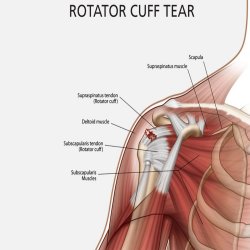Inflammation in a joint appears to be a better predictor of pain levels than actual structural pathology observed on an MRI.
According to a new study, the primary factor of how much pain a patient was experiencing was the amount of IL-8 found in the joint. This was a much better predictor of pain levels than the actual size of the tear.
Conclusions
Many people might assume that a larger tear and more damage to the rotator cuff would automatically result in more pain. In reality, however, pain is very complex, and is not only influenced by structural factors, but is also a result of psychological and biological components. In this case, it appears that biological factors, such as inflammation, are playing a more prominent role than structural factors. This suggests that properly addressing the pain in the shoulder will require a plan for decreasing levels of inflammation.
References
